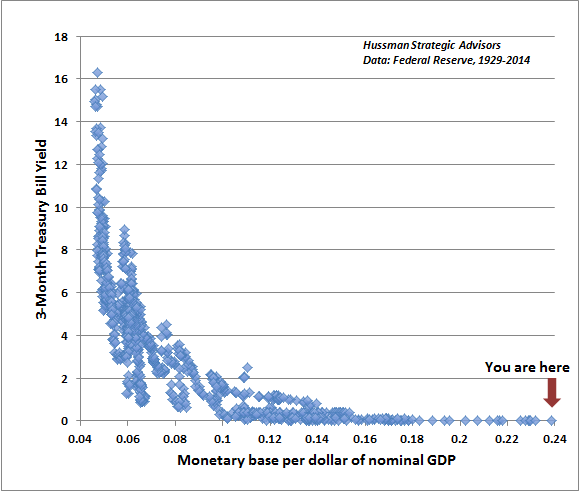I am avid reader of John Hussman and eagerly await his weekly commentary on the markets, economics, and investing climate. Professor Hussman's pieces are usually a good read, but I have to say his latest commentary knocks it out of the park. An excerpt of the piece can be found below and the remainder can be found here

Before the 15th century, people gazed at the sky,
and believed that other planets would move around the Earth, stop, move
backwards for a bit, and then move forward again. Their model of the
world – that the Earth was the center of the universe – was the source
of this confusion.
Similarly, one of the reasons that the economy
seems so confusing at present is that our policy makers are following
models that have very mixed evidence in reality. Worse, when
extraordinary measures don’t produce the desired results, the response
is to double the effort without carefully asking whether there is a
reliable, measurable cause-and-effect relationship in the first place.
When there are broken links in the chain of cause-and-effect, “A causes
B” may be true, and “C causes D” may be true, but if B doesn’t cause
C, then all the A in the world won’t give you D.
Let’s review some relationships in the data that are clear, and some that are not so clear at all.
Quantitative easing and short-term interest rates
First, the following chart shows the relationship
since 1929 between the monetary base (per dollar of nominal GDP) and
short-term interest rates. This is our variant of what economists call
the “liquidity preference curve,” and is one of the strongest
relationships between economic variables you’re likely to observe in
the real world. After years of quantitative easing, the monetary base
now stands at 24% of GDP. Notice that less than 16% was already enough
to ensure zero interest rates, so the past trillion and a half dollars
of QE have done little but increase the pool of zero-interest assets
that are fodder for yield-seeking speculation. Notice also that unless
the Fed begins to pay interest to banks on their idle reserves, the Fed
would have to contract its balance sheet by about $1 trillion
just to raise Treasury bill yields up to a fraction of one percent. So
the primary policy tool of the Fed in the next couple of years will
likely be changes in interest on reserves (IOR). Get used to that
acronym.

No comments:
Post a Comment